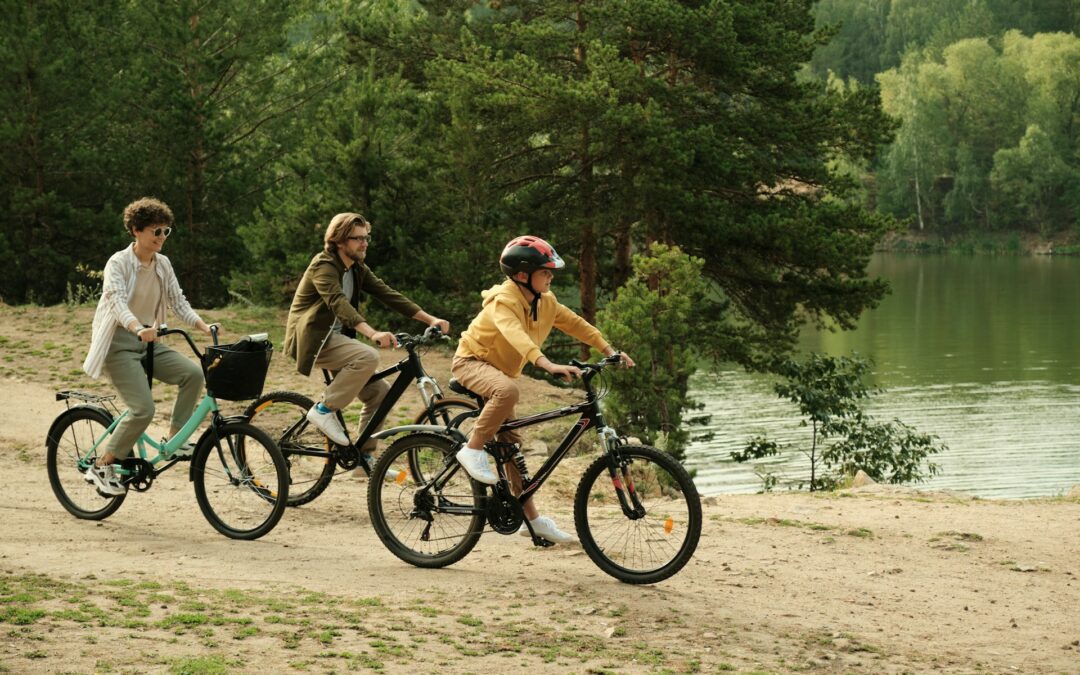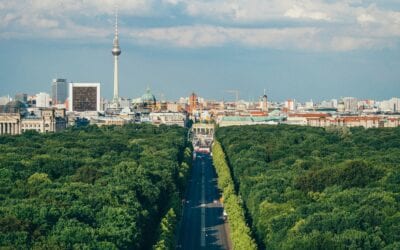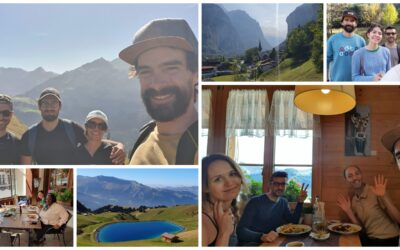|
|
While there are a lot of wonderful things about the digital nomad lifestyle, it is also true that it’s not good for the planet.
Constantly traveling long distances by plane or car increases your carbon footprint, potentially to as much as 30 times that of the average person. Buying small travel items means more packaging being bought and thrown away. Short-term accommodation is often among the least environmentally friendly due to regular cleaning and single-use products.
So, what can digital nomads do to make travel more environmentally friendly? One thing that can make a major difference is choosing to travel to eco-friendly destinations. It is easier to minimize your carbon footprint while living in cities designed to use renewable energy, reduce carbon emissions, and optimize waste recycling. But this choice is also a case of “putting your money where your mouth is” and showing city planners that sustainability is not just good for the environment, but also the economy.
In this article, we will share with you a list of a few of the most sustainable cities in the world that are also attractive digital nomad destinations. These are ideal locations for your next environmentally friendly escape. We’ll also share a few of our top tips for making more sustainable choices when traveling long-term.
Top Eco-Friendly Digital Nomad Destinations
Eco-friendly cities have invested in renewable energy, sustainable city planning and building design, reducing carbon emissions from transportation, and improved waste management systems. Below are some of the cities (and countries) leading the charge when it comes to sustainability, but I have also chosen cities that have a fascinating cultural scene, good internet infrastructure for remote workers, and just a vibrancy that digital nomads will enjoy.
Costa Rica (Cost of Living $)
As a country, Costa Rica is known for its biodiversity, and there is a formal commitment to sustainability. The South American nation has already had great success, becoming the first carbon-neutral country in 2021.
Today Costa Rica is 98% deforestation-free and generates 99% of their electricity from renewable sources such as hydro, wind, and solar power. The country recycles 60% of its waste and has a “pay as you throw” program, which charges residents by the weight of their rubbish. All schools in Costa Rica are also required to teach sustainability from elementary school through university.
Costa Rica is an ideal destination if you love exploring the great outdoors. It is full of beautiful beaches, wildlife sanctuaries, lagoons, rivers, and waterfalls. It also has friendly cities with a laidback Latino culture.
Costa Rica currently offers a one-year renewable digital nomad visa with a minimum income requirement of just US$3,000 per year and a simple online application process.
Copenhagen, Denmark (Cost of Living $$$)
Not only is it an exciting Viking homeland, but Copenhagen has been ranked as the world’s greenest city multiple times. The city aims to become carbon neutral by 2025. Copenhagen is also a highly walkable city with a strong cycle culture and excellent public transportation.
Copenhagen is only one of many sustainable cities in Denmark that could have been added to this list. Many Danish cities are consistently ranked among the most sustainable including Nyborg, Middelfart, Aarhus, and Aalborg. So, you can travel around the countryside in good conscience.
Visit Denmark for culture, cooking, and coastline. As well as a rich Viking history, you can discover the increasingly popular Hygge phenomenon and see the homeland of many of your favorite fairytales. It is also the home of the original Legoland. Read our guide to living in Copenhagen as a digital nomad.
Denmark is in the Schengen area, and you can visit the Schengen area as a whole for 90/180 days as a tourist. Most nationalities can travel visa-free.
Madrid, Spain (Cost of Living $$)
Madrid is working hard towards a more environmentally sustainable future with moves such as banning polluting vehicles in the urban center, creating more bike lanes, and introducing electric buses. The city is creating strategic green biodiverse areas across the city. This includes building a green wall around the city and a 75-kilometer forest with nearly half a million new trees.
Madrid is a culturally rich city with many museums and cultural destinations including the Museo del Prado, which has an amazing collection of Spanish and European art, Thyssen, for 20th-century art, and Reina Sofia completes Madrid’s Golden Triangle of Art. There are also theaters and festivals, like the Primavera Sound Festival, showing unforgettable shows throughout the year.
Visit the Palacio Real and the El Retiro Park for greenery and the Gran Via for shopping during the day, and then discover the city’s exciting food scene with everything from classic tapas to Michelin-starred fine dining. The nightlife is also memorable, though most bars and clubs don’t open until at least 11 pm and stay packed until dawn. Read our guide to living in Madrid as a digital nomad here.
Spain is in the Schengen area, and also offers a one-year digital nomad visa with a minimum income requirement of EUR2,300 per month.
Singapore (Cost of Living $$$)
Singapore is a world leader when it comes to green urban planning, something it has been leading due to its small size and large population (5.5 million). It has an action plan to be the greenest city in the world by 2020. While it is a big and sprawling city, public transport is extensive and affordable. It has invested heavily in renewable energy and energy efficiency and buildings are assessed based on their environmental performance.
Singapore is a vibrant city-state with everything you need in a short distance. Visit for the incredible food, amazing nightlife, green escapes, white sand beaches, unbeatable shopping, and high-tech ambiance. Most nationalities can visit Singapore for up to 90 days as a tourist visa-free. Read our guide to living in Singapore as a digital nomad.
Hanoi, Vietnam (Cost of Living $)
Hanoi has been focusing on the preservation of green spaces across the city and developing sustainable transportation options. It is also developing new renewable energy sources and promoting sustainable building design. Smaller than Ho Chi Minh City, Hanoi is also a better choice when it comes to walkability and public transport.
Hanoi is a gateway for discovering Vietnam, with its beautiful jungle interior and stunning coastal regions. The city itself is both a political and cultural capital where you will find plenty of food, fun, and commerce. Wander the green parks and colonial villas and mansions and visit centers like the Fine Arts Museum. Most nationalities can travel to Vietnam for up to 90 days on a tourist eVisa.
Curitiba, Brazil (Cost of Living $)
Curitiba has been a green pioneer for decades and is now one of the most sustainable cities in the world. They began the region’s first recycling initiatives decades ago and now recycle 70% of all city waste. They have an excellent public transport system that has won awards for reducing carbon emissions. Green spaces are included in city planning, and it is one of the greenest cities in the region, literally.
Curitiba is a relatively small but vibrant city for discovering Brazil’s unique culture of music and dance. It is also much safer than the larger cities such as Rio de Janeiro and Sao Paulo. It also has beautiful botanical gardens, an incredible opera house, and surprising number of good museums, and plenty of history to uncover.
You can visit Brazil as a tourist for up to 90 days, or apply for the digital nomad visa, which is for one year renewable and has a monthly income requirement of US$1,800.
San Diego, California, USA (Cost of Living $$$)
San Diego has been one of the leading US cities when it comes to sustainability. They have begun to transfer all its facilities to the city’s 100% renewable energy service and are phasing out the use of fossil fuels in both residential and commercial buildings. They are also taking major steps to phase out fossil fuel vehicles and promote alternative green forms of transport, especially cycling.
Visit San Diego for its glorious beaches, great weather all year, and many cultural attractions including Balboa Park, with 17 museums across 1,200 acres, and the San Diego Zoo. A cultural melting pot, you can also expect tantalizing cuisine, exciting nightlife, and diverse cultural neighborhoods. The US has a variety of tourist visa programs that allow you to stay for up to 90 days.
Travel Tips for Sustainable Digital Nomads
While choosing eco-friendly cities is a great place to start when choosing a more sustainable approach to the digital nomad lifestyle, there are many other small things that you can do to reduce your environmental impact when traveling.
Investigate Alternative Transportation
While jumping on a plane is often the quickest way to get where you are going, it is also one of the most carbon-emitting options. Trains and boats may not only be a more environmentally friendly way to travel but can also be a way to experience more of the fascinating world around you.
Find Walkable Destinations
In addition to long-distance travel, you can make environmentally friendly decisions when it comes to day-to-day travel. Choose “walkable” cities that can be explored by foot and metro. Look for cycle-friendly cities and other modes of greener transport.
Choose Eco-Friendly Accommodations
Most hotels aren’t very environmentally friendly. Rooms are cleaned daily, barely used toiletries are thrown away after each guest, and common areas are well-lit, even when there is no one around. Airbnbs and other short-stay accommodations often aren’t much better.
Choosing accommodations that make active eco-friendly choices to make their businesses more sustainable can make a big difference. This can be simple things like choosing not to have your room cleaned daily and having toiletries available only on request.
Bigger things to look for include solar paneling, eco-friendly lighting and appliances, water recycling (your shower water can be used for watering gardens), and waste reuse and recycling. Look for accommodation options with green certifications such as LEED, EarthCheck, and GreenKey.
Travel Slower
One of the biggest things you can do to reduce your environmental impact is to travel slower. This means fewer carbon-emitting transport choices, more sustainable accommodation options, and fewer short-use products bought and disposed of.
Digital nomads who have adopted the slow travel approach also share that they find the experience more fulfilling as they form deeper connections with people, places, and cultures.
Pack Light
One of the things you simply must learn as a digital nomad is how to live with less. This not only makes lugging around everything you need with you more convenient, but it can also reduce your carbon footprint. Every pound of luggage you carry increases fuel consumption and emissions during transport.
Avoid Excessive Packaging
But you need to get packing light right. Things like travel toiletries are terrible for the environment because they involve a lot of packaging. Plus, these are mostly things that you can buy when you get to your destination. Buy the biggest item possible for the time you are staying and look for biodegradable packaging.
Eat and Shop Locally
Try to buy local products and eat local cuisine from local produce rather than relying on heavily packaged products that have been imported. This is also a wonderful way to understand the local culture, as food is often at the heart of things.
Think About Your Digital Devices
As a digital nomad, you probably have quite a few digital devices, such as your laptop and smartphone. Make sure computers are turned off when you aren’t using them and unplug chargers when they aren’t in use. Just remembering to be a little more conscious about turning off lights closing refrigerator doors, and so forth can make a difference.
Choose Sustainable Coworking Spaces
Coworking spaces are already an environmentally friendly way to work, but some coworking spaces are more environmentally friendly, with initiatives designed to reduce the carbon footprint of their building.
Look for spaces that use smart LED lighting that dims or switches off when not needed, that offer sustainable materials for your use, have solar panels for power generation, and comprehensive recycling programs to minimize waste.
CoCoon Coworking Space in Hong Kong has an eco-friendly design made with natural bamboo, using non-toxic paints, with low-water plants, as well as low-energy LED lights. Green Spaces Coworking in Denver, Colorado works with certified green partners in the community to support workers. The space itself is power-saving with 160 solar panels and a zero-waste recycling system. Greenhouse Coworking in Jakarta, Indonesia is a nature-centered workplace that prioritizes environmental consciousness.
The Sustainable Valley Coworking space at Byron Bay in Australia is more than just a coworking space, it also offers design, technology, mentoring, incubator, and advertising services to its members. As well as offering a sustainable space made from natural and energy-efficient materials, they support businesses in developing sustainable and ethical models of operation.
Join the Sustainability Movement
As we are all becoming more environmentally conscious, we must make more sustainable lifestyle choices, regardless of whether we stay in one place or live on the road.












